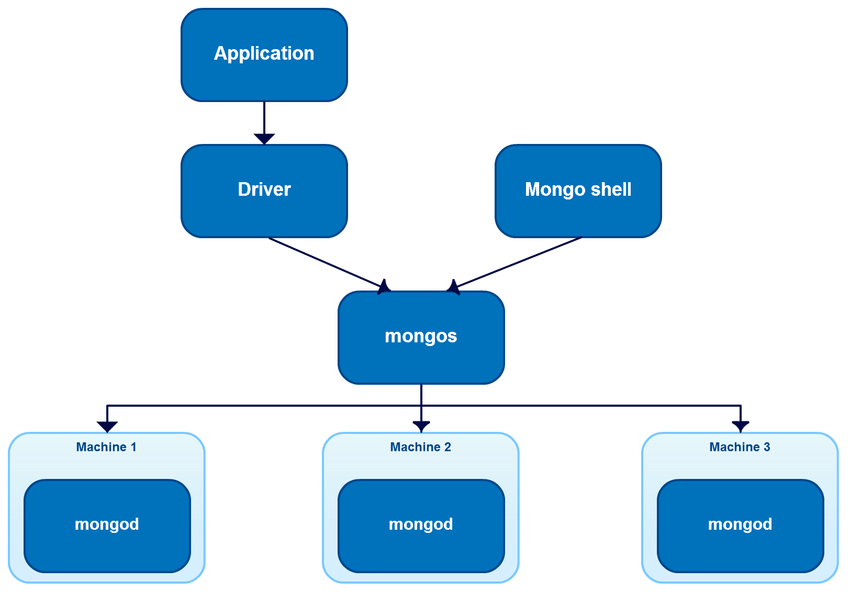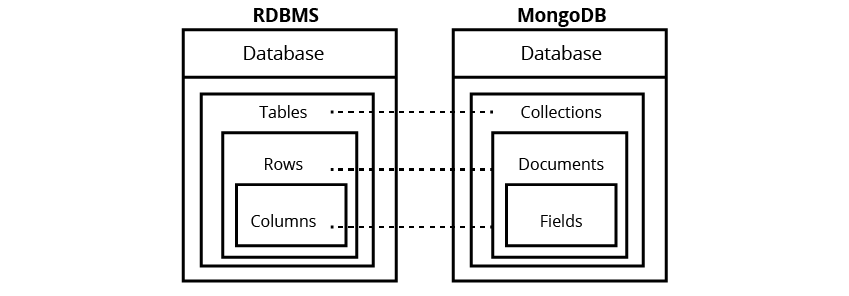- Using Firebase to Persist Data Tutorial | Complete Guide [STEP-IN]
- MongoDB and Node.js Tutorial | Create Database
- What Are the Benefits of Using MongoDB Tutorial | A Concise Tutorial Just An Hour
- PL/SQL Tutorial : Learn PL/SQL in 7 Days
- PostgreSQL Tutorial
- How to Download and Install SQL Server?
- Date Functions In SQL Server And MySQL Tutorial
- SQL Server Tutorial
- SQL Applications Tutorial
- Full Join in SQL
- SQL Command Cheat Sheet
- Data Modelling
- Order By and Group By in SQL Tutorial
- Apache Cassandra Interfaces Tutorial
- mysql workbench tutorial
- Apache Cassandra Architecture Tutorial
- NoSQL Database Tutorial
- Data Manipulation in SQL Tutorial
- SQL Server Reporting Services (SSRS) Tutorial
- Using Firebase to Persist Data Tutorial | Complete Guide [STEP-IN]
- MongoDB and Node.js Tutorial | Create Database
- What Are the Benefits of Using MongoDB Tutorial | A Concise Tutorial Just An Hour
- PL/SQL Tutorial : Learn PL/SQL in 7 Days
- PostgreSQL Tutorial
- How to Download and Install SQL Server?
- Date Functions In SQL Server And MySQL Tutorial
- SQL Server Tutorial
- SQL Applications Tutorial
- Full Join in SQL
- SQL Command Cheat Sheet
- Data Modelling
- Order By and Group By in SQL Tutorial
- Apache Cassandra Interfaces Tutorial
- mysql workbench tutorial
- Apache Cassandra Architecture Tutorial
- NoSQL Database Tutorial
- Data Manipulation in SQL Tutorial
- SQL Server Reporting Services (SSRS) Tutorial

What Are the Benefits of Using MongoDB Tutorial | A Concise Tutorial Just An Hour
Last updated on 11th Aug 2022, Blog, Database, Tutorials
Introduction:
The MongoDB database is a free and open-source document-based database that works on multiple platforms and can be easily scaled. To put it simply, MongoDB is a NoSQL database created by MongoDB Inc.The name “Humongous,” from which “MongoDB” is derived, implies “large” or “enormous.” The MongoDB database was developed to hold massive amounts of data quickly and efficiently.In contrast to RDBMSs, MongoDB does not store data in a relational fashion (RDBMS). A “NoSQL” database is the term for this type of storage system. Data is not normalised under schemas and tables where every table has a set structure, as is the case in SQL-based databases. Instead, it saves collected data as schema-free JSON-based documents. Unlike relational database management systems (RDBMS), this one lacks the traditional table-row-column data structure.
Prerequisites:
Before continuing with this tutorial, you must have a basic understanding of info, text editor and execution of programs, etc. as a result of we have a tendency to square measure getting to develop high performance info, thus it’ll be smart if you have got Associate in Nursing understanding on the essential ideas of info (RDBMS).
Structure of MongoDB
Below is a list of some of the words and phrases used frequently in MongoDB.
All MongoDB documents must have the field “_id.” The _id column in a MongoDB document denotes a unique value. The _id field is similar to the document’s primary key. When a new document is created in MongoDB, one is automatically created if there isn’t a _id field. As a result, using the customer table example from above as an example, Mongo DB will assign a 24 digit unique identification to each page in the collection.
1.Collection:A group of files kept in MongoDB. The counterpart of a table in any other RDMS, such as Oracle or MS SQL, is a collection. A collection exists in a single database. Collections do not impose any form of organisation, as the introduction shown.
2.Cursor: This is a pointer to the results of a query. Clients can iterate over a cursor to receive results.
3.Database:This is a container for collections, similar to how RDMS is a container for tables. Each database sends an own set of files to the file system. A MongoDB server can hold several databases.
4.Document:In a MongoDB collection, a document is simply a record. The document is made of of field names and values.
A name-value pair in a document’s field. There may be one field or many in a document. Fields are relational databases’ counterpart of columns. The diagram below shows a representation of a field containing key-value pairs. As a result, in the example below, CustomerID and 11 are one of the key value pairs established in the document.

Advantages of MongoDB over RDBMS
- Schema less − MongoDB could be a document info within which one assortment holds completely different documents. variety of fields, content and size of the document will disagree from one document to a different.
- Structure of one object is evident.
- No advanced joins.
- Deep query-ability. MongoDB supports dynamic queries on documents employing a document-based search language that is nearly as powerful as SQL.
- Tuning.
- Ease of scale-out − MongoDB is straightforward to scale.
- Conversion/mapping of application objects to info objects not required.
- Uses internal memory for storing the (windowed) operating set, sanctionative quicker access of knowledge.

Features of MongoDB
These square measure some necessary options of MongoDB:
1.Support unplanned queries:In MongoDB, you’ll search by field, vary question and it conjointly supports regular expression searches.
2.Indexing:You can index any field in an exceedingly document.
3.Replication:MongoDB supports Master Slave replication.A master can perform Reads and Writes and a Slave copies data from the master and can only be used for reads or back up (not writes)
4. Duplication of data:MongoDB can run over multiple servers. The data is duplicated to keep the system up and also keep its running condition in case of hardware failure.
5.Load balancing:It has an automatic load balancing configuration because of data placed in shards.
6. Supports map reduce and aggregation tools.
7. Uses JavaScript instead of Procedures.
8. It is a schema-less database written in C++.
9. Provides high performance.
10. Stores files of any size easily without complicating your stack.
11. Easy to administer in the case of failures.
12. It also supports:
- JSON data model with dynamic schemas
- Auto-sharding for horizontal scalability
- Built in replication for high availability
- Now a day many companies using MongoDB to create new type.
MongoDB is often employed by Programmers to:
- Store the info
- Manage the info
- Retrieve the info
- Create net applications
- Store a High volume of information
MongoDB Future Scope
Holding customers when they go from the improving to the sending stage is made easier by MongoDB Future Scope Atlas (especially the individuals who are embracing the cloud). Popular tools like Micro Strategy and Tableau, which can be used with a BI connector, have MongoDB licences to help with outstanding scientific jobs. Another possibility is that an information shop or distribution centre will take over them. Consider incorporating Spark, which is now handling the tasks that Hadoop might perform.
LA combined question that starts with MongoDB’s own accumulation system (front-end) and pulls down the training of inquiry to the information area is preferred. Claim the inquiry is connected to the main issue. Similar to the BI examination competitors, companies like Microsoft, IBM, and Oracle are helpless in this situation. Instead of turning MongoDB into a hub for information distribution, its base should be strengthened by adding analytics to the operational applications that would still run locally.
Disadvantages:
Indexing:High-speed performance is possible in MongoDB with the right indexes. If the indexing process is sloppy or contains mistakes, MongoDB’s performance will suffer significantly.The problems with indexing would take some time to resolve. This is another major shortcoming of MongoDB.
Lack of Information and Nesting:The maximum file size for a document stored in MongoDB is 16 MB. Furthermore, there is a 100-level ceiling on the depth of nesting for document performance.
Duplicates:One of MongoDB’s major flaws is that it frequently duplicates data. Because the relations are not explicitly indicated, this deficiency makes working with data sets difficult.Duplicating data is not ACID-compliant and so could lead to data corruption.
Heavy reliance on memory:MongoDB’s large space needs can be traced back to the fact that it doesn’t have join functionality, which results in redundant data. Increases in duplicate data are taking up valuable storage space.
Salary package of a Mangodb Developer:
In India, a mongodb developer may expect an annual income of 1,050,000, or around $538. The starting salary for an entry-level employment is 650,000 per year, while the maximum salary for a highly experienced worker is 2,000,000 per year.
Conclusion:
Scalability and flexibility in application development are key features of MongoDB’s design, and the database’s scale-out architecture makes agile development practise possible. Developers love it because it simplifies the creation of web and enterprise applications.